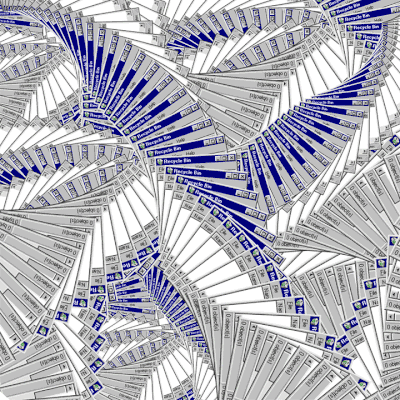
APRIL 21ST, 2022
A recent article by Christiane Paul about NFTs captured my attention because of the term ‘digital art’. Christiane Paul is, among other things, Adjunct Curator of New Media Arts at the Whitney Museum of American Art. This community speaks of digital art with a sense of ownership. Many have been working for several years writing and showing digital, most often in galleries. So the NFT explosion is disconcerting to them because they feel this is their turf. They often cite people who first did this or that as digital art back in the 90s or even further if you include generative artists from the 60s. To them, the NFT explosion has little to do with digital art in the way they have written about and shown it. As Christiane Paul says of NFTs, "It is a sales mechanism, not a medium." I agree with this. There is no particular aesthetic associated with NFTs - it is a way to sell art online.
But it begs the question: What is digital art?

Difference Machines: Technology and Identity in Contemporary Art
One way to understand this is to think about how we view art today instead of how we believe art should be viewed. Many feel that the only way to view art is in person, in front of the actual work, mainly in a gallery or museum.
But today, almost everyone views art digitally, as pixels on a phone, tablet, computer, or flat panel. Before computers, most probably viewed artwork through a book or print. We have been making copies of art for a long time now.
You may feel that Rothko is an important artist - but if the way you primarily see his work is through these devices as pixels - is this digital art?

Orange and Yellow by Mark Rothko
The NFT explosion has removed the real-life gallery mechanism from the equation. Now a viewer and potential buyer views whatever is in front of them as art whether made with analog tools, art software or simply code. What they see is the actual product. The term digital art is redundant.
Take as an example the work of Lisa Fogarty, a very skilled and popular NFT artist. Her work is made by hand with collage, pen and ink, watercolor, and other real-life techniques. One of her popular series is 'Watercolor Tuesday' in which she paints a piece of game technology or other real-life objects from the 90s as a beautiful watercolor on paper. Of course, she converts the artwork she makes in real life to pixels and then sells them as an NFT. Is this digital art?

Watercolor Tuesday by Lisa Fogarty
If you were to ask someone like Christiane Paul, they would likely say no, because it is not using the medium of computers, code and pixels (the digital part) in a 'sophisticated' way (her word). Christiane Paul puts it this way, “hanging jpegs on the blockchain has become the norm in creating and selling NFT art.” For her and curators in this world, for the work to be 'sophisticated,' it should reflect and comment on the actual technology itself.
But why is 'hanging jpegs on the blockchain' not art? An artist creates work using everything from pencils to art programs to code; they make an NFT, people like it, and buy it. Why does it matter how it was made?
The persistence of digital devices in our life, where we live a significant % of our time doing everything from work to play to communication, has changed the equation. The NFT explosion is just a reflection of this. Most people do not care if it is ‘digital’ or not. The creator creates the work using analog or digital tools, puts it online as an NFT, and then sells it to a collector who proudly displays it in their online gallery or wallet. Maybe they even print it out.
It brings into focus the idea of how much of our actual life is lived digitally. If we are honest about it, we live far more of our lives online than we may be comfortable admitting; but it is the reality.
What I think is unique to this new world order of imagery is Motion Art, or Animated Gifs. The experience of viewing a Rothko or a Lisa Fogarty artwork is the same in real life or on a digital device. We see a static image in front of us and react to it as such. But a work that can be experienced like a painting, but with motion because of digital displays is something new. I have written about this here and here.

We need to acknowledge the significant shift in our perception of images to understand the NFT explosion. We no longer live in a mainly analog world where computers are on the periphery of our interactions. Many of us live primarily in this digital world and come back to the real world for food and sleep. It is only natural that our relationship with art has changed as well.
